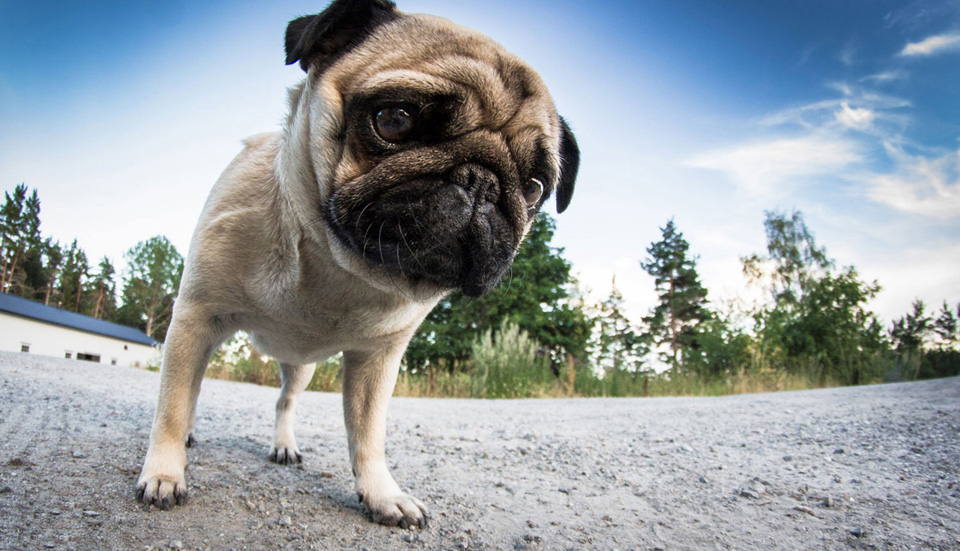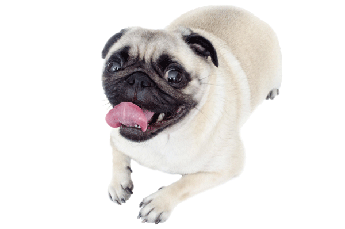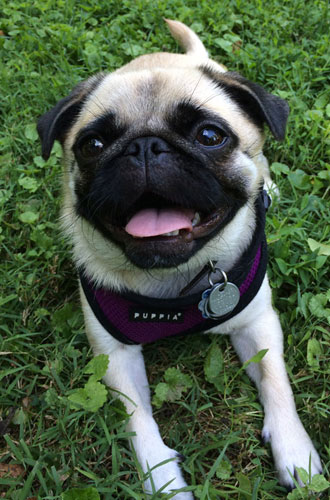

Round head, square body, curly tail — that’s the Pug. Wherever he goes, his wrinkly face and fun-loving personality charm people. He is good with other dogs, cats, and children, and nothing makes him happier than being part of the family. He’s no jogging buddy, but this lively fellow loves an outing to the office or park.
Don’t let his worried, wrinkled little face fool you: The Pug is laughing inside. He’s laughing at you and with you — and he’s also trying to make you laugh. These dogs live for fun, which is the secret to their enduring popularity. Bred as companions for Chinese nobility, today they’re fulfilling their ancient function as beloved house pets. To their many admirers there is simply nothing like a Pug.
These are undeniably lovable dogs, bred for centuries for their wonderful dispositions. The Pug is never happier than when spending time with his human family, often following someone from room to room. He is welcome wherever he goes, with a handsome, smooth-coated frame in shades of tan, gray, and black, and with a black mask accenting his sweetly wrinkled face.
Pugs are usually good with other dogs, cats, and children. Bigger and hardier than many small-dog breeds, they can even withstand a bit more in the way of rough play, as long as it’s supervised and doesn’t get out of hand. Because of their relatively large size (for a toy breed) and easy-going temperament, they’re wonderful with children and perfect for on-the-go families, as long as they realize Pugs are not designed to be jogging companions or beach bunnies.
Compact and well-muscled with an endearing little ring of tail, a Pug should ideally weigh no more than 20 pounds. Many Pugs weigh more, owing to their begging skills. This trait too often leads to obesity, which can add to the already significant health burden these solid little dogs carry.
Lively, love-bug dispositions aside, the Pug has been bred to be much less healthy by the show-breeder’s focus on features such as a smaller size, flatter face, and overabundance of wrinkles. Heat-intolerance comes with the territory: Even temperatures as low as 80 degrees can be dangerous to these breathing-challenged dogs, which means a Pug must live indoors and have air conditioning available in all but the mildest summers. This is not a breed that can live outside.
If you’re careful to mind his special needs, the Pug is an easy-care pet. His short coat sheds, but his grooming needs are modest. He doesn’t need a great deal of exercise — nor can he tolerate it — but it’s important to keep him lean, fit, and mentally challenged, especially when he’s young. Because of his great love for people, care should be taken to accustom your Pug to being alone so he doesn’t develop excessive anxiety when left behind.


Breed Group: Toy
Height: 10–12 inches
Weight: 14 to 18 pounds
Life Span: 12 to 14 years
